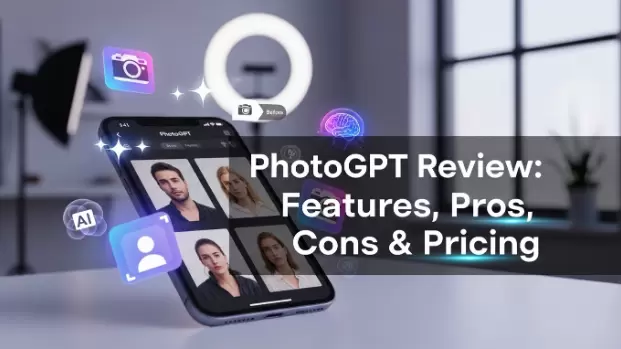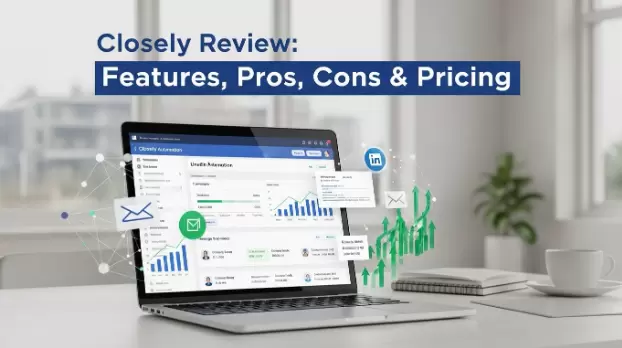B2B business has been evolving very quickly since technology continues to advance. With complex sales cycles and processes, B2B marketing automation can benefit many companies out there, regardless of their size.
You might be thinking what does that mean- well, it simply makes it possible for you to communicate with the right audience at the right moment.
But how do you begin integrating these marketing automation efforts into your business? What do these processes look like? We’ve explained all that you’ll need to know to start taking your B2B company to the next level.
How Does B2B Marketing Automation Benefit Your Business Growth?
According to Adobe's State of Marketing Automation 2023 report, 98% of marketers think that marketing automation is essential for success. So, if you haven't already, you should think about automating your marketing processes as well.
The benefits of employing marketing automation marketers most frequently mentioned were better decision-making (35%), enabling better use of working hours (38%), and improving customer experience (43%). Other than that, here are a few other advantages you can consider:
Cuts Costs & Increases Productivity
Integrating automation can help lower human error greatly and maintain consistency in data. By automating routine tasks, you can also boost productivity and efficiency since your marketing teams now have more time to concentrate on more strategic duties.
Once you scale up your automation system, you can save money on labor costs (and time) since there’s less effort needed.
Creates a Personalised Customer Experience
With data and insights at their disposal, marketers can boost engagement and build better relationships by sending highly customized and targeted ads to individual leads or even certain segments.
Customer service automation establishes more meaningful relationships and enhances the entire customer experience. Moreover, this specifically targeted content helps you gain more knowledge about the behavior and interests of your audience. There are many customer service automation tools, with Zendesk being one of the most popular, offering robust features to automate interactions and provide personalized support. However, many businesses look for alternatives to Zendesk as these often offer comparable or superior tools for personalization, automation, and analytics, providing better flexibility, innovation, and value. By choosing the right platform, businesses can optimize both marketing and customer service efforts, ensuring impactful, customer-centric experiences.
Shows a Unified Overview of Data
To streamline processes and campaigns, marketing automation solutions for B2B businesses work with other external platforms to provide a 360° view of the customer’s journey. For example, a CRM system keeps track of the behavioural insights of your leads in addition to their contact details. Taking that into account, your marketers can tailor customized messages to be sent to them using automation software.
This allows you to target qualified leads, enhance lead scoring, and gain a deeper understanding of your customers. So, you can then understand why and how leads convert.
With that said, people connect and appreciate your brand more when you deliver the correct message to the right audience at the right moment. Thanks to marketing automation, you can generate more leads and conversions while saving time and money.
B2B Marketing Automation Strategies You Can Implement in Your Business
The market for B2B marketing automation is expanding swiftly. However, you need to ensure that your marketing strategies are supporting rather than undermining your goals.
Having said that, you now know what to look for when selecting a marketing automation strategy that can help you increase revenue while saving time and money.
Introduce Lead Scoring
Not every one of your clients will be in the same stage of the buying process as another. Should you send an identical email to everyone about whether some will be less interested, others more involved, and some won't even open it?
So, how can you divide them up into various segments through primary scoring? You can gather information through your CRM or automation software, you can assess the degree of engagement.
A lead score is assigned to each subscriber based on their level of participation. So if your client is getting in touch using your Contact form, you can assign them a positive point, whereas those who are more inactive can be assigned a negative score as shown in our example. You don’t need to do this manually though, you can easily leverage your marketing automation tool.
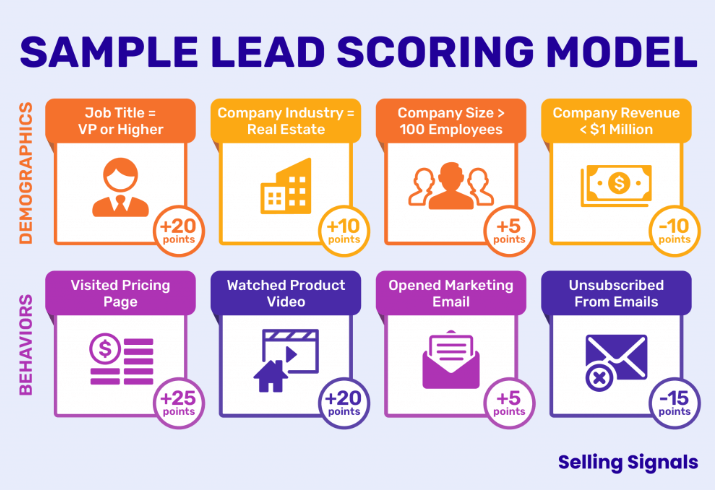
After that, you can divide your subscribers into various categories and send them emails that are customized for each one of them based on their lead score.
Develop Lead Nurturing Campaigns
Once you’ve segmented your leads and followed up with messages, you might be thinking your job is done.
However, you can’t just abandon regular communications with your clients. The more you reach out, chances are the better they’ll be engaged and you’ll develop stronger relationships with them.
Firstly, you have to convince the leads that are most qualified to become clients by highlighting the advantages of doing business with your brand. To keep these prospective clients moving through the sales funnel, you can employ automated emails and additional marketing materials such as scheduled LinkedIn posts.
An example of an automated lead nurturing campaign could be providing insightful case studies, and success stories with potential customers through an automated newsletter. The end goal here is to maintain the connection you have with your client regardless of which stage they’re at.
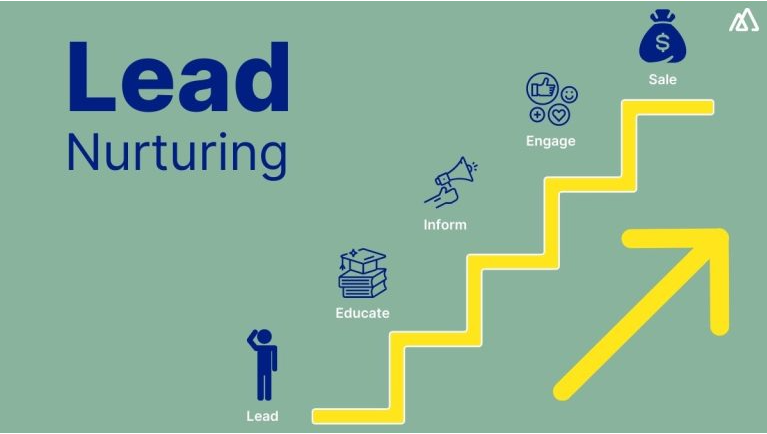
Use Automated Chat-Bots for Communication
Zendesk’s Customer Experience Trends Report 2023 revealed that a majority of 72% of business leaders expressed that their top objective for the upcoming year is to integrate AI and chatbots more extensively throughout the customer experience.
Given the rise of AI chatbot technology, it’s easier for B2B businesses to stay in constant contact with their target audience, draw in new clients, offer helpful support, and more.
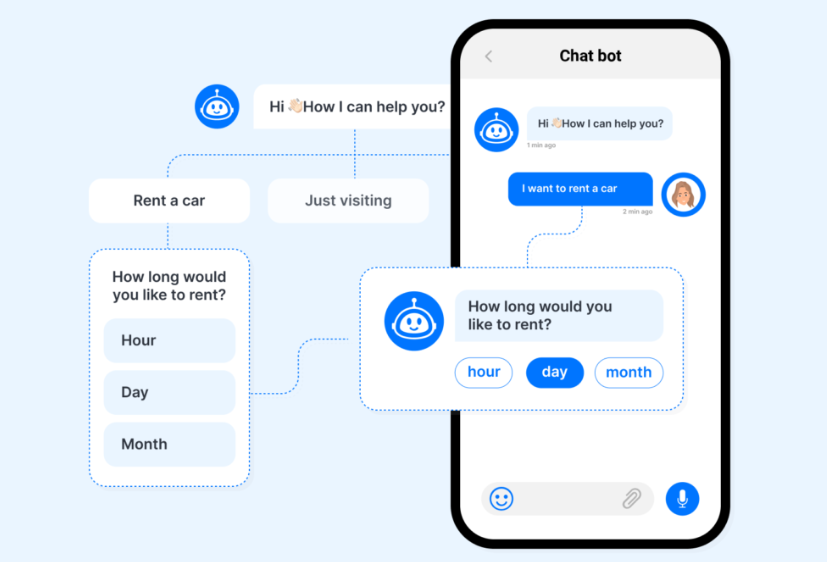
The best part about modern AI chatbots is that they can establish rapport with potential customers as well as forward quality leads from marketing directly to sales. This way, you not only keep your current clientele but you can also acquire new, qualified leads.
Implement Action-Based Triggers
With marketing automation, you can monitor the pages your clients visit, the products they look at, and the emails they open on your website.
By using this data, you can send them customized emails that include product recommendations that they might find interesting. Some actions can even trigger surveys, such as after using an update or activating a new service, you can collect data about customer satisfaction by using NPS feedback forms.
Even when a client abandons their cart, you can send some recommendations from past purchases via push notifications or reminders.
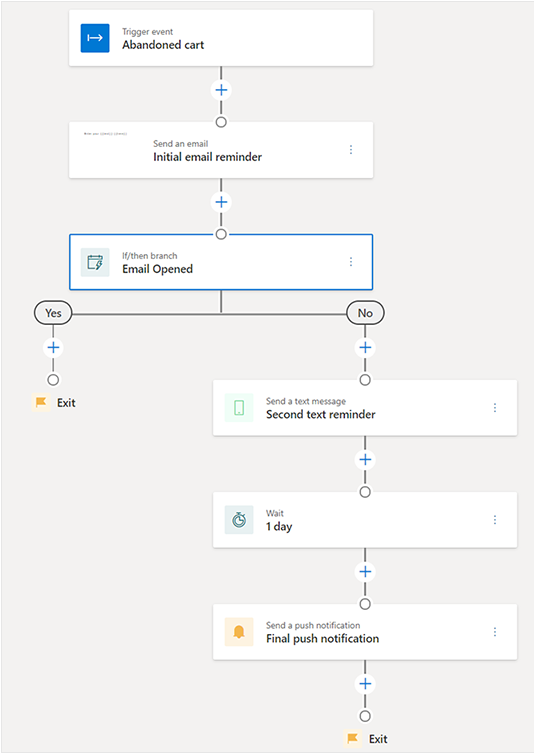
Think About Upselling or Cross-selling
You already know that B2B marketing automation tools can be used to track user behavior on your product and gather data.
So, if you're launching a new service or product, you can also use email automation to send the launch email to various subscribers who might be interested in trying it out. Now that your consumer has placed an order, you can automate the cross-selling process with an email sequence to show another complimentary product/service they might think about using.
Another way you can increase your customer’s order value is by offering them a higher tier of product or service in case the one they’re on isn’t cutting it. This can be shifting them from a premium plan to a business plan to accommodate more users.
At the end of the day, you should select the B2B marketing automation strategy that most closely matches your needs and your objectives. But remember that the automation tool you’re using should also have the capability to effectively advance your marketing objectives.
Best Practices to Keep in Mind When Using B2B Marketing Automation
It’s no surprise: just implementing a B2B marketing automation initiative doesn’t mean you’ll be good at it. So, to ensure the best possible outcome, here are some tips you can follow when it comes to automating marketing processes:
- You should first start to create a proposal using an outline template for your defined goals and objectives for your marketing automation strategy. During the implementation phase, this strategy will assist you in maintaining organization, effectively allocating resources, and overcoming any roadblocks.
- Since technology is advancing at such a rapid pace, it’s important to pick flexible automation software that’ll scale along with your business and address your needs. That’s why it’s ideal to use a smaller stack of specialized software solutions that can adapt as you grow.
- Make sure that your website, CRM, and other systems are properly integrated with your marketing automation software. To get a unified picture of your marketing initiatives, it’s important to have a smoother flow of data.
- It’s also important to choose a marketing automation platform that addresses hosting compliance, particularly those handling sensitive data. Since you have to protect customer data is protected, you must also ensure it complies with legal and ethical requirements.
You can fully realize the benefits of your B2B marketing automation software only when you are following these best practices. To evaluate the effectiveness of your marketing automation initiatives, do track important metrics, pinpoint areas for development, and make the required changes to optimize return on investment.
The Future of B2B Marketing Automation: What’s in Store
In today's cutthroat industry, B2B marketing automation has become more of a necessity. So businesses should always keep on learning more about upcoming marketing trends. Remember that the goal is to maximize the impact of human interaction rather than to replace it.
So, devote time and resources to what matters most—forming personal connections and building relationships with your B2B audience.


 Table of Content
Table of Content


